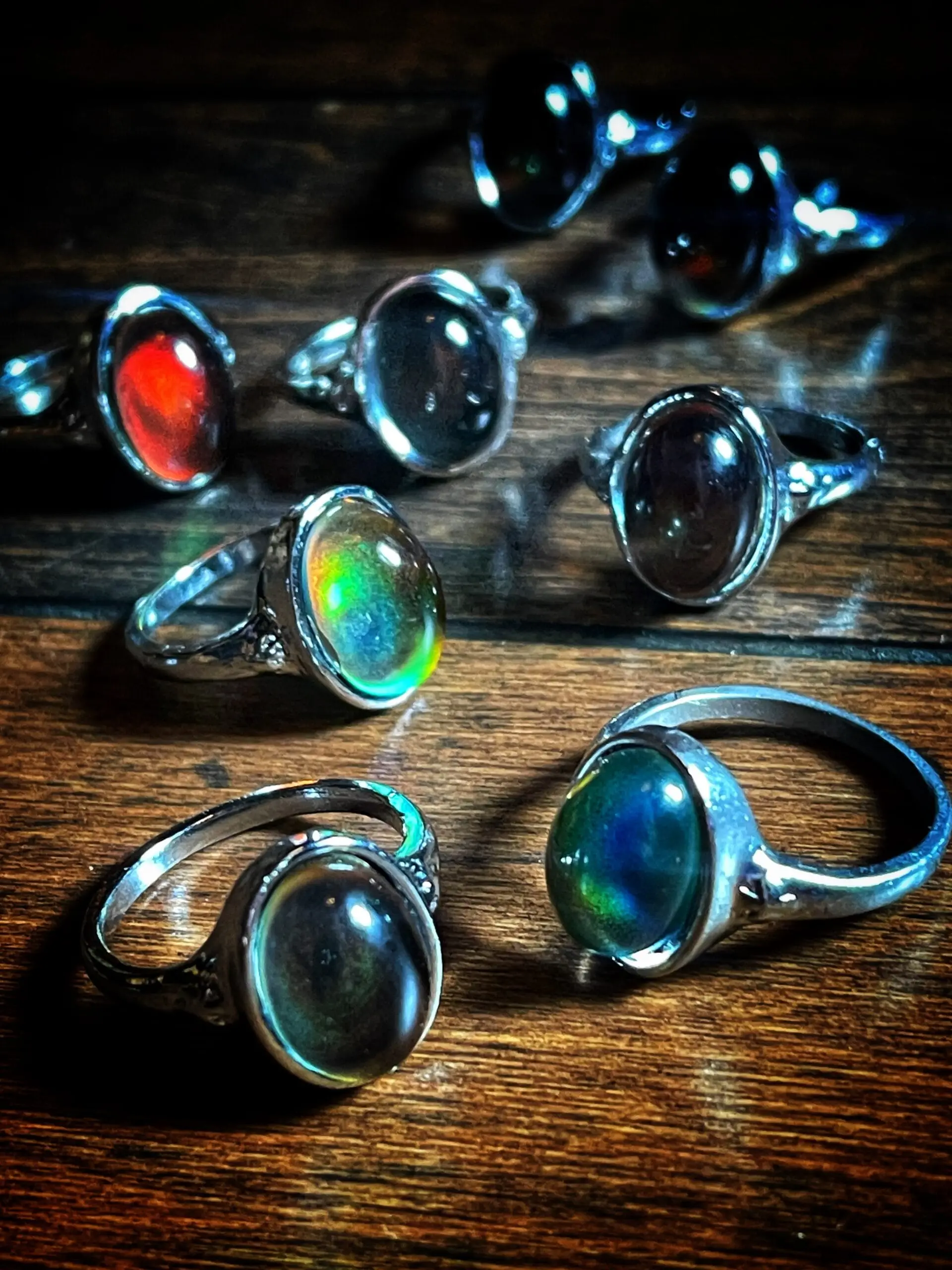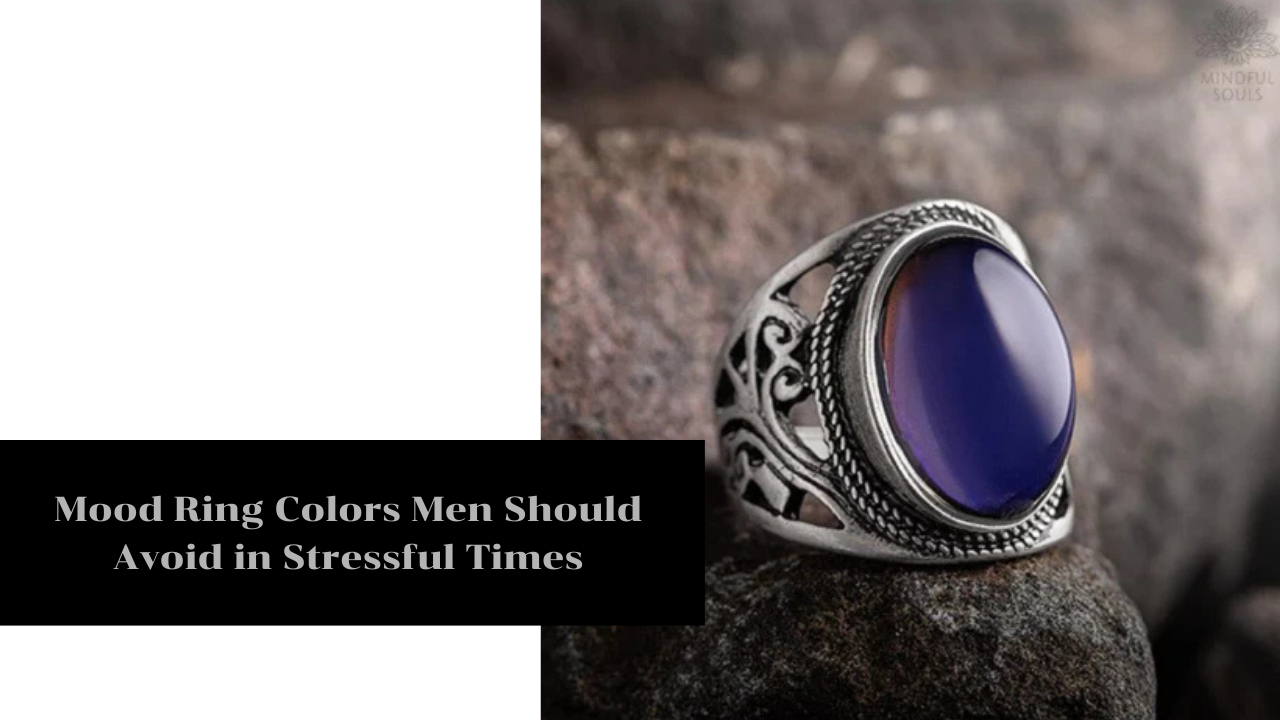Mood rings have long been a playful accessory, captivating wearers with their shifting hues that claim to reflect our inner emotions. For men navigating modern life’s pressures, mood rings can serve as subtle cues to check in on stress levels and overall well-being. But during especially stressful times, certain “colors on mood ring” might reflect or even amplify negative emotional states. By understanding which colors signify more tension and why it’s wise to be mindful of them, you can turn your mood ring into a tool for self-awareness and stress management.septum piercing
Why Mood Ring Colors Men in Stressful Moments
In an era where mental health for men is finally getting attention, small rituals even as simple as wearing a mood ring can help create healthy habits of self-reflection. Mood rings don’t actually “know” your feelings, but the way their colors mirror your body temperature can offer surprising insights into how stress and emotion are affecting you physically.
Colors on a mood ring can act as early warning signs of mounting stress, fatigue, or emotional overload. Noticing these shades can encourage men to take a break, recalibrate, or seek connection before things feel too overwhelming.
Mood Rings and the Science of Changing Colors

Every classic mood ring contains thermochromic crystals that react to skin temperature. When your body temperature drops often during periods of stress, worry, or tension your ring may shift to darker or cooler colors. When you’re relaxed and circulation increases, warmer, brighter hues appear. While the “psychic” claims of mood rings are mostly for fun, they do serve as fascinating biofeedback devices, linking physical and emotional clues.
Colors on Mood Ring Shades to Avoid When Stressed
When it comes to “colors on mood ring,” not all hues are created equal especially when you’re feeling under pressure. Here are the main ring colors men should be wary of during stressful periods, and what they often mean:
- Black: Universally recognized as the color of high stress, anxiety, or tension. When the ring shows black, it usually means your hands are cold a common sign of stress’s impact on circulation. This shade signals it’s time to slow down, breathe deeper, and address what’s weighing on your mind.
- Grey: While less severe than black, grey on a mood ring reflects feelings of fatigue, worry, indecision, or low energy. Grey is the shade of internal fog if it dominates your ring, it might be a nudge to prioritize rest and clarity before tackling big decisions.
- Dark Brown: Less common, but sometimes present in certain mood ring brands, dark brown often indicates nervousness, a physical stress response, or even mild agitation. In stressful times, this color suggests your body is reacting and may benefit from a calming ritual.
- Dark Blue: Though blue often means calm, a very deep or muddy blue can sometimes show up for those stuck between tension and exhaustion. If your ring darkens to this shade, it might be time to pause and practice self-care.
While seeing these colors isn’t cause for alarm, wearing a mood ring and noticing a repeated pattern of dark shades could be your subconscious telling you that your stress is building up.
How Stress Influences Mood Ring Colors
Stress isn’t just an emotional state it’s a physical experience that can subtly change your body’s temperature and chemistry. During high-stress moments, your body responds by:
- Directing blood flow away from extremities, making your fingers cooler and creating darker ring colors.
- Triggering tension and shallow breathing, further cooling the skin.
- Making you less aware of comfort or relaxation cues, leaving your ring stuck on “stress” shades.
By recognizing these clues, you can intervene early, preventing extended worry or burnout.
Practical Ways Men Can Use Mood Rings for Stress Management
- Check your color before big events: If your ring turns black or grey at the start of a stressful day, pause for a quiet moment of breathing or a short walk, and notice if the color brightens.
- Turn it into a ritual: Use a mood ring as a silent check-in during meetings or social situations if a dark color appears, excuse yourself for a break or seek out a calming activity.
- Track patterns: Jot down times when your ring shows undesirable hues and look for patterns (e.g., certain work projects, social pressures, or lack of sleep).
- Pair with healthier habits: When darker shades show up, pair that awareness with positive routines drinking water, stretching, or calling a friend.
What to Seek Instead: Calming Colors for Stress Relief
While darker colors on mood rings are signs to step back, lighter hues can be targets to aim for during self-care moments:
- Green: Symbolizes balance and normalcy. If your ring is green, you’re in a sweet spot of calm and focus.
- Blue (clear, bright): Associated with relaxation and open-mindedness ideal for stress recovery.
- Light Silver or Aqua: Gentle and neutral, these colors reinforce feelings of stability and intentional calm.
Creating an environment that invites these colors think physical comfort, uplifting music, deep breathing can help guide your stress management routine.
Leveraging Mood Rings for Real Wellbeing
Mood rings are no substitute for professional mental health care, but in stressful times, they become meaningful reminders to check in with yourself. For men especially, identifying and honoring stress is key to resilience. By understanding which colors on mood ring signal “slow down” moments, you’ll have another simple, stylish tool for managing daily pressure.
So next time your ring shows black, grey, or muddy blue, take it as nature’s nudge: pause, reset, and care for yourself because emotional strength begins with awareness.
